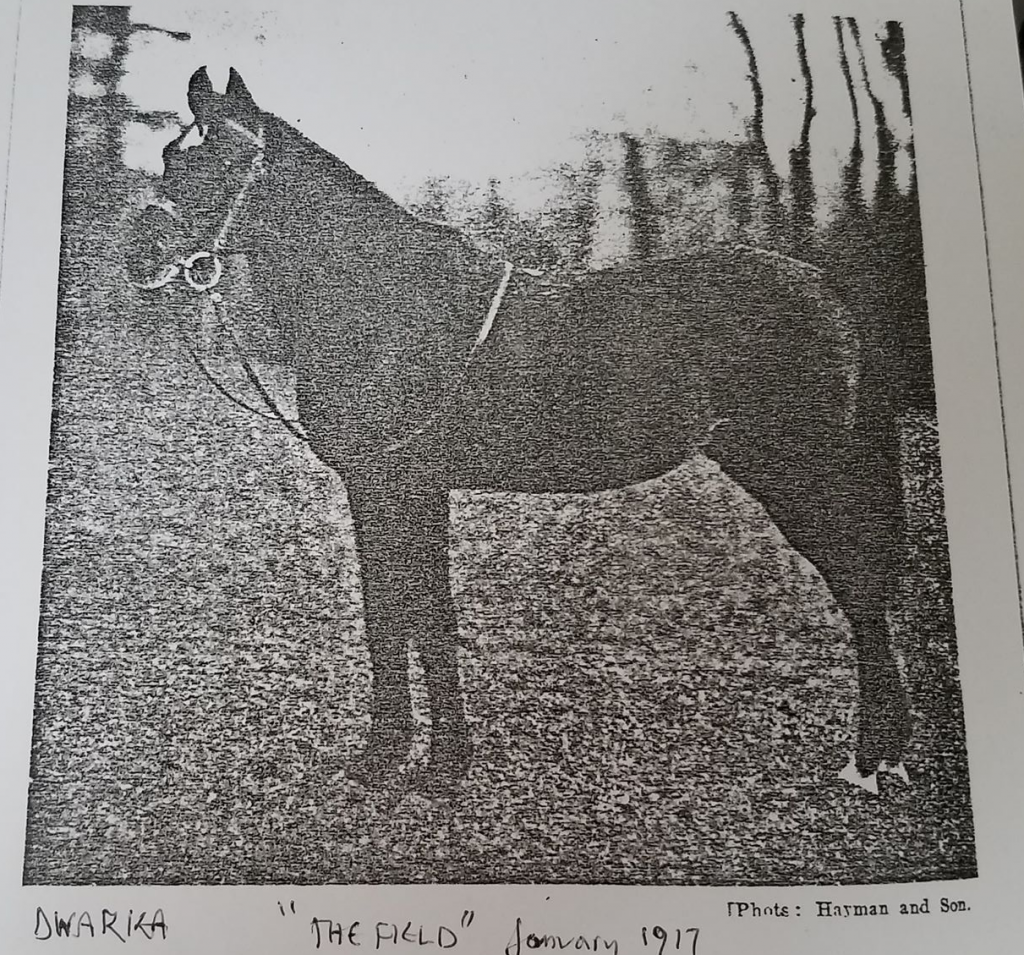Dwarka Goes To The Zoo
In an earlier thread on Dwarka, Astrid Moegling shared the following photo print of a horse that was captioned as being of Dwarka, located on the Meisterdrucke Fine Art Prints website:

Arab stallion Dwarka with Pony Moore, a horse van driver, London Zoo, 1921 (bw photo)
Astrid asked the additional question of: “And is it really Dwarka? I thought only one of his hind feet was white? On the other hand, the head seems to be the same (including the makeshift halter etc) as in the headshot above. Probably taken at the same shooting.“
I think it is him! The rope halter is definitely similar, and the star matches other headshots of Dwarka where his marking is visible. There are precious few photos of Dwarka in full, and some of them are very poor in quality, but we can compare with a few of them to determine that, yes, Dwarka does, in fact, have two white hind socks, both visible from the near side, but with the partial sock on the off-side hind only extending slightly around the front to to be visible from the off side.

Difficult to judge from this photo.

Clearly has two socks.

The Polo Monthly, May 1921, pg 98-100, c/o The British Natural History Museum.
You can see the faint tip of a sock on the front of the off-side hind.

You can see a faint tip of a sock on the front of the off-side hind.

The idea that Kate McLachlan and I have thrown out there re: the photo of Dwarka at the London Zoo is that it was taken shortly before he passed away, and it is very possible that Dwarka may have been euthanized at the Zoo and then his remains was handled appropriately to be prepared for first the earlier postmortem examination and later his skeleton being interned at the Natural History Museum. It certainly shows a horse that has dropped weight, consistent with him being humanely destroyed following ailing health. Ginne Pope says he was euthanized at the Royal Mews, however, which was only a few miles down from the zoo.
Dwarka’s presence at the London Zoo leads me to wonder what kinds of records they have of him in their library. We’ll hopefully be hearing back from them soon, but if anyone happens to live in London or close enough to, and wants to plan a research trip and help shed more light on this guy, have at it.
Thank you for taking this up, and for posting all the additional pictures! Now I know why I was wrong about Dwarka having only 1 white hindfoot!
Dwarka is of special interest to me because he is in the pedigree of my first Arabian horse (my beloved stallion Ramak who was Crabbet/Old English/Polish) a few times.
BTW I love this site. Whenever I have the time, I come here to read and study. One of the best sources I know with so many knowledgeable people here!
Wow! A wealth of Dwarka images! The top photo is definitely him. Same head & expression, poor old fellow. And of course the tiny ears.
I love the 1903 image – you can see how splendid he was in his prime.
Yes, I think it’s clear that Dwarka had two white hind feet, although the right hind was just a partial, and barely visible when seen from his off side. Also in real life, his hocks seem to have been substantially more angulated than portrayed in the painting.
very happy to see these pics thank you